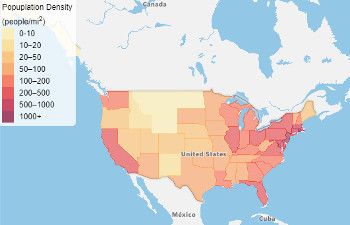Storing and querying your geospatial data in Azure

While Azure Maps is strong in visualizing and interacting with map- and location data, you probably also need a secure and powerful location to store and query your (location) data. In this blog post, we will explore the different options for storing and querying geospatial data in Azure, including Azure Cosmos DB, Azure SQL Database, and Azure Blob Storage. Storing and querying geospatial data in Azure is a powerful and flexible way to manage and analyze large sets of geographic information.
Azure Cosmos DB is a globally distributed, multi-model database that supports document, key-value, graph, and column-family data models. One of the key features of Cosmos DB is its support for geospatial data, which allows you to store and query data in the form of points, lines, and polygons. Cosmos DB also supports spatial indexing and advanced querying capabilities, making it a great choice for applications that require real-time, low-latency access to geospatial data.
Example query:
Read here more information about Geospatial and GeoJSON location data in Azure Cosmos DB.
Another option for storing and querying geospatial data in Azure is Azure SQL Database. SQL Database is a fully managed, relational database service that supports the spatial data types and functions of SQL Server. This allows you to store and query geospatial data using standard SQL syntax, and also includes spatial indexing and querying capabilities. SQL Database is a good choice for applications that require a traditional relational database model and support for SQL-based querying.
Read here more information about Spatial Data in Azure SQL Database.
Finally, Azure Blob Storage can be used to store and query large amounts of unstructured data, including geospatial data. Blob Storage allows you to store data in the form of blobs, which can be accessed via a URL. This makes it a great option for storing large files, such as satellite imagery or shapefiles. While Blob Storage does not include built-in support for spatial querying, it can be used in conjunction with other Azure services, such as Azure Data Lake Storage or Azure Databricks, to perform spatial analysis on the data.
In this sample we used satellite imagery that is stored in Azure Blob storage
https://samples.azuremaps.com/?sample=tile-layer-options
In conclusion, Azure offers a variety of options for storing and querying geospatial data, including Azure Cosmos DB, Azure SQL Database, and Azure Blob Storage. Each of these services has its own set of features and capabilities, and choosing the right one will depend on the specific needs of your application. Whether you need low-latency access to real-time data, support for traditional SQL-based querying, or the ability to store and analyze large amounts of unstructured data, Azure has the tools you need to get the job done.
Published on:
Learn moreRelated posts
Automating Business PDFs Using Azure Document Intelligence and Power Automate
In today’s data-driven enterprises, critical business information often arrives in the form of PDFs—bank statements, invoices, policy document...
Azure Developer CLI (azd) Dec 2025 – Extensions Enhancements, Foundry Rebranding, and Azure Pipelines Improvements
This post announces the December release of the Azure Developer CLI (`azd`). The post Azure Developer CLI (azd) Dec 2025 – Extensions En...
Unlock the power of distributed graph databases with JanusGraph and Azure Apache Cassandra
Connecting the Dots: How Graph Databases Drive Innovation In today’s data-rich world, organizations face challenges that go beyond simple tabl...
Azure Boards integration with GitHub Copilot
A few months ago we introduced the Azure Boards integration with GitHub Copilot in private preview. The goal was simple: allow teams to take a...
Microsoft Dataverse – Monitor batch workloads with Azure Monitor Application Insights
We are announcing the ability to monitor batch workload telemetry in Azure Monitor Application Insights for finance and operations apps in Mic...
Copilot Studio: Connect An Azure SQL Database As Knowledge
Copilot Studio can connect to an Azure SQL database and use its structured data as ... The post Copilot Studio: Connect An Azure SQL Database ...
Retirement of Global Personal Access Tokens in Azure DevOps
In the new year, we’ll be retiring the Global Personal Access Token (PAT) type in Azure DevOps. Global PATs allow users to authenticate across...
Azure Cosmos DB vNext Emulator: Query and Observability Enhancements
The Azure Cosmos DB Linux-based vNext emulator (preview) is a local version of the Azure Cosmos DB service that runs as a Docker container on ...
